
Seeing a shelf full of ferments-in-progress never fails to brighten my day: the colors, the sense of accomplishment, and the anticipation of enjoying the fruits of my labor all play a part. Today, I gaze at the lovely jars of watermelon rind pickles just beginning their transformation and smile.
It doesn’t hurt that, after what seems like a long spell of gloomy and cold weather, we’re enjoying a stretch of undeniably springlike temperatures. Spring is here! Well, maybe not yet, but even the suggestion is enough to rekindle hope.
I was surprised to find watermelons at the store recently and had a hankering for some lacto-fermented pickles. Ironic that the watermelon flesh, usually the part that’s desired, is merely an enjoyable byproduct of making these pickles, isn’t it? Don’t worry, though, the flesh definitely won’t go to waste!

To get to the rind, the flesh must be removed. I used a big, sharp, and fairly heavy knife to carefully cut the watermelon into rings, which made it easier to separate the flesh from the rind. I ended up with a lot of delicious, juicy watermelon, of which I proceeded to eat prodigious amounts.
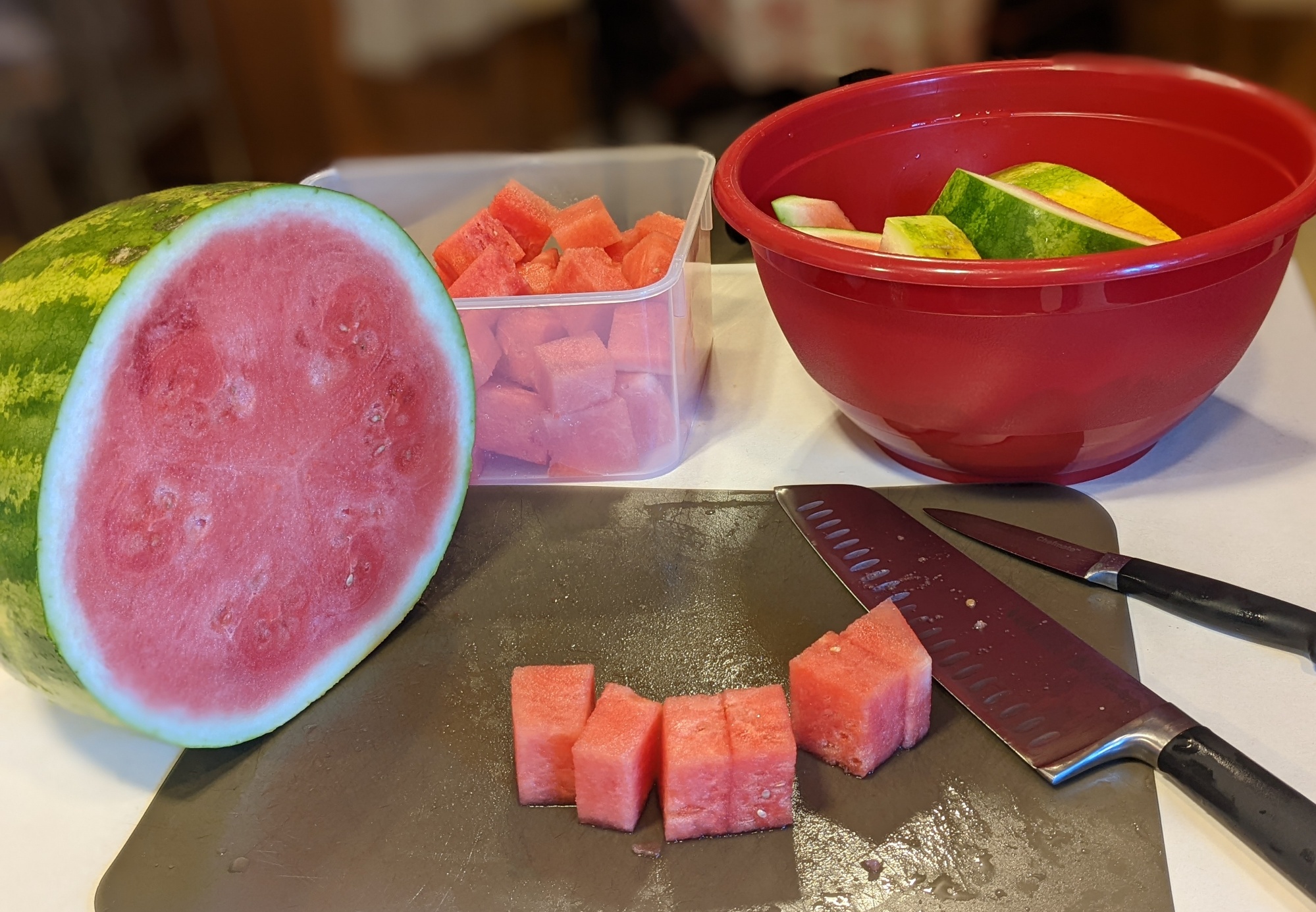
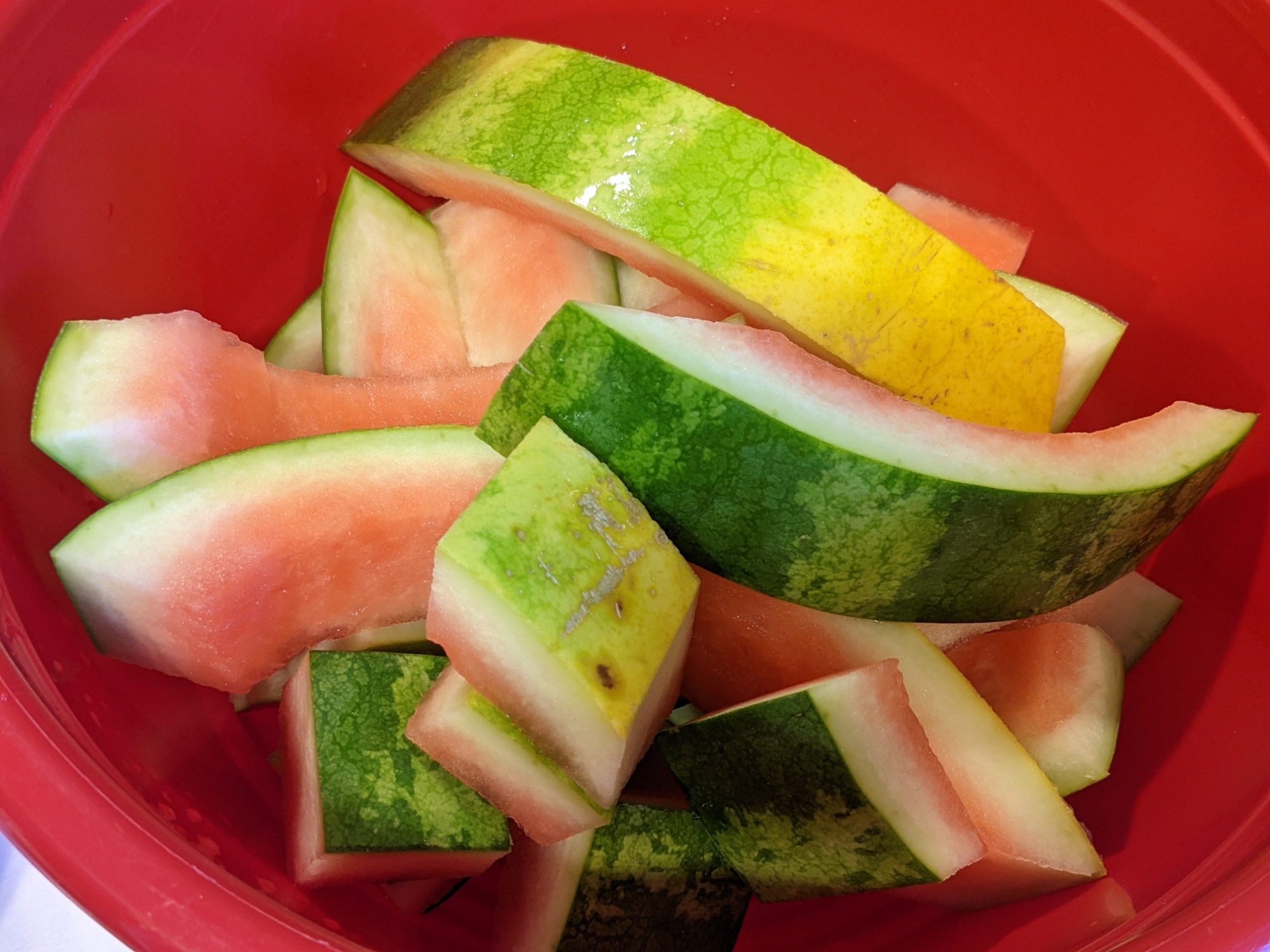
The rinds still needed to be peeled. When I made these pickles in the past, I sliced the rind off with a knife; this time, I tried a vegetable peeler, which actually worked very well. The peeler allowed me to remove just the outermost peel, leaving more of the rind intact. There were a few pieces that were too small and slippery to use the peeler on, so I just sliced the rind off of those ones. In the future, though, I’ll try to keep the pieces larger so that I can just peel them all with the peeler.
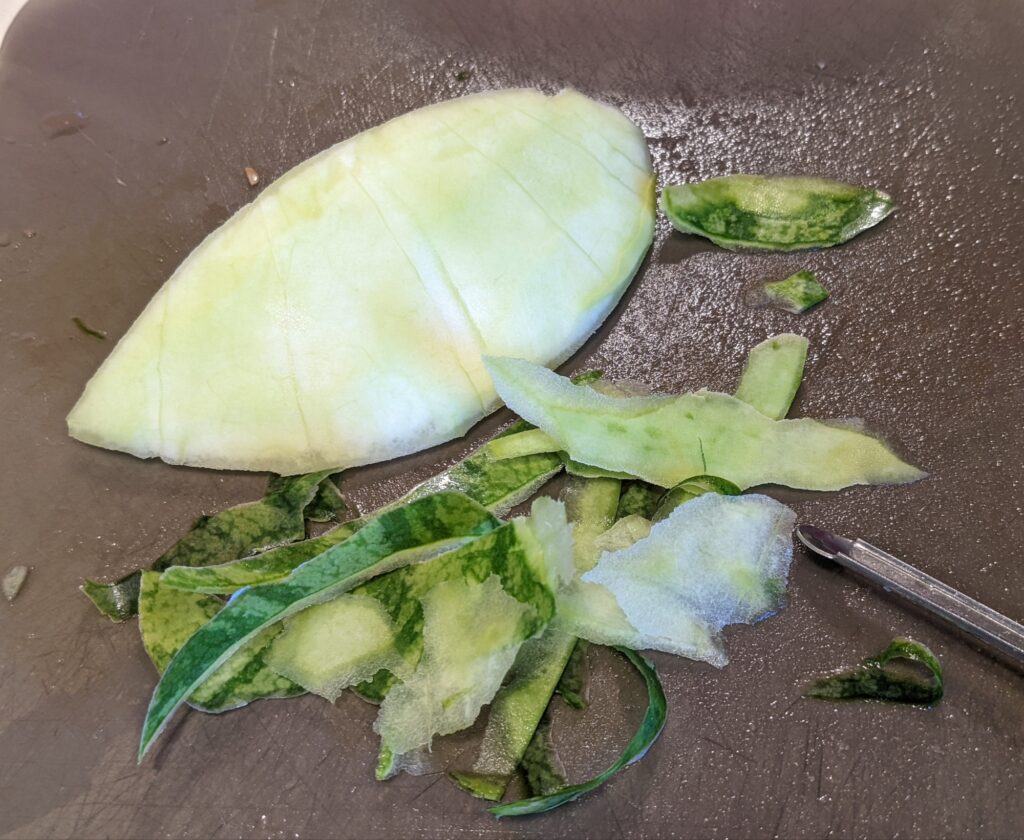
Once peeled, I chopped the pieces into roughly 1 inch pieces. As you can see from the photos, some pieces were closer to the 1 inch ideal than others – regardless, they should work.

I’m a fan of a “sweet and spicy” flavoring that’s comprised of cinnamon sticks, whole cloves, and honey, so I added those to the jars I’d designated for that pickle flavor. I did reduce the honey by half because I like just a hint of sweetness, and toyed with the idea of trying stevia instead…but ultimately decided to stick with the honey for this batch.
Two other jars were set aside for dill-based pickles, so minced garlic and dried dill went into both. Since I don’t keep mustard seeds on hand (but really need to get some, since I plan on making these pickles often through the summer), I used prepared mustard in a 1:1 substitution. I’ve done this with a previous batch and was pleased with the results. In addition, I decided to spice one of the jars up with some extras: crushed red pepper and turmeric. There’s always room for creativity with pickles!
After adding the flavorings to all of the jars, I packed in the watermelon rind, pushing the pieces down firmly. Once the jars were full, I poured a brine solution over the rinds until they were completely covered. I ended up making some additional brine and having a small amount left over, which I saved in the refrigerator. It may come in handy for top-ups, if needed.

Lids securely fastened, I left the jars to work their magic. I’ll check the ferments daily, burping them and pushing the rinds down under the brine as needed. I have a tendency to overfill jars (and in this case, I was trying to get every bit of rind into a jar), so I place them on a tray to catch any liquid that may bubble out of the jars. If you’re not already doing this, I highly recommend it, especially if the jars sit above anything else – that liquid can make quite a mess.
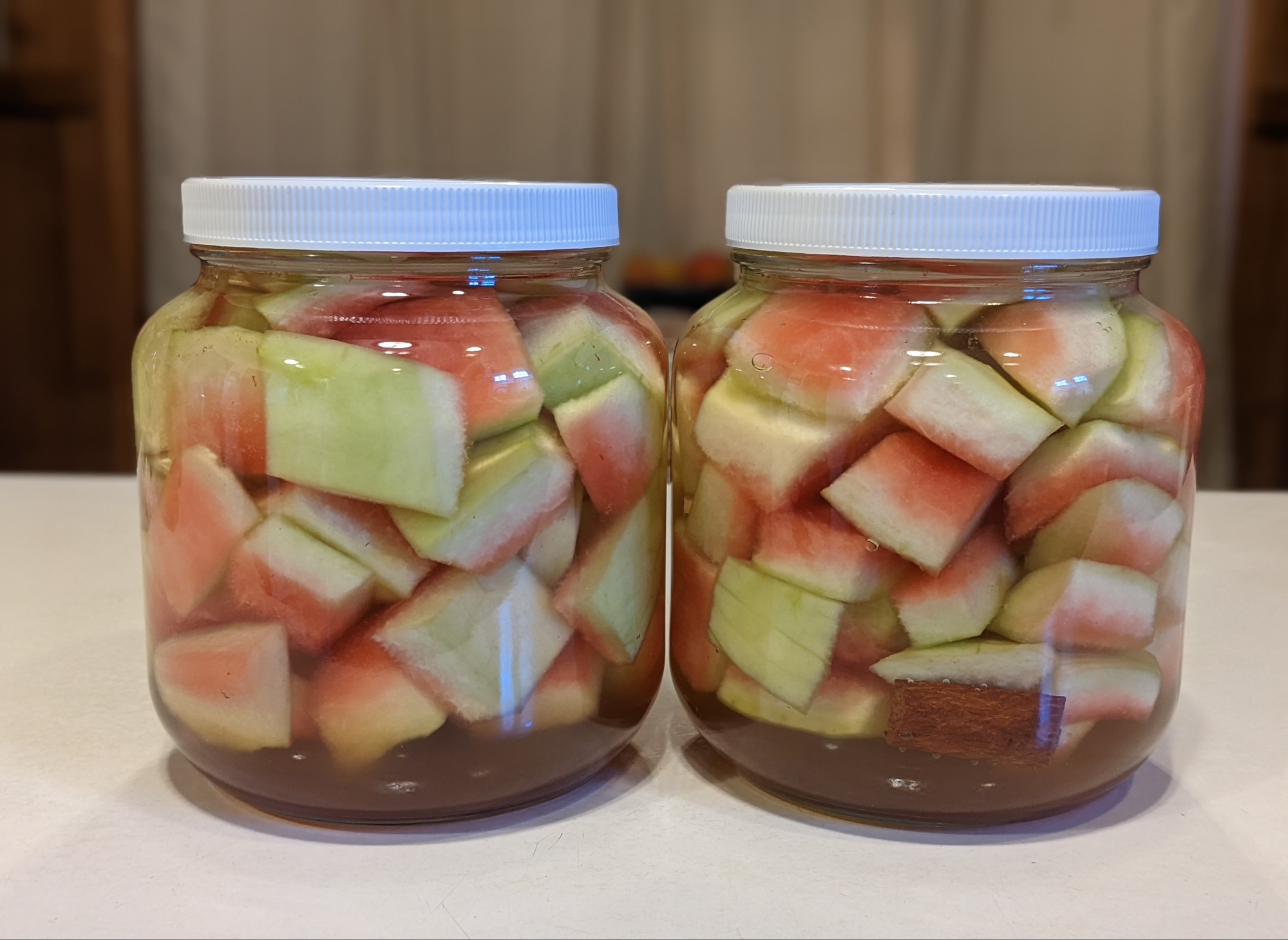
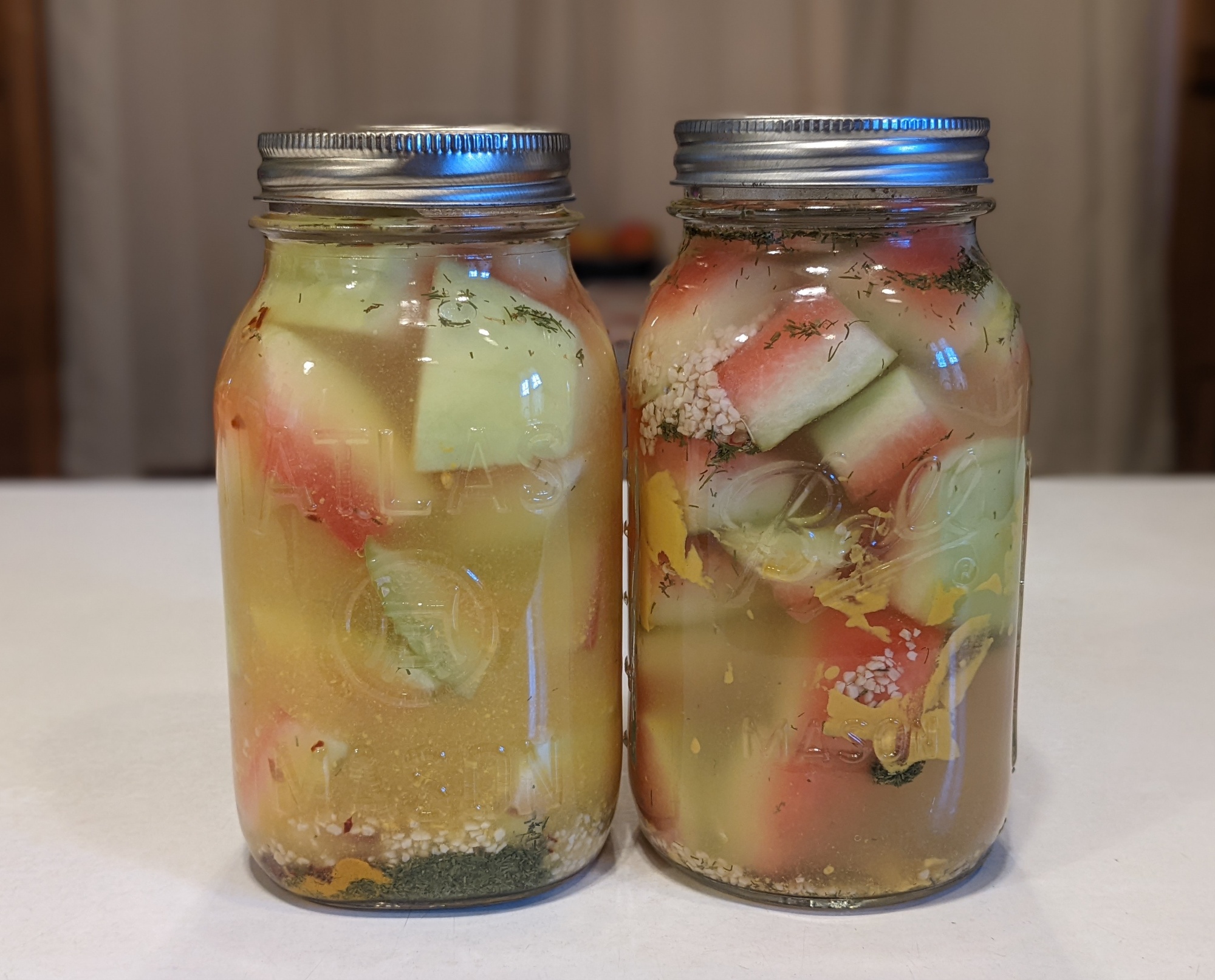
Wondering what the finished pickles taste like? Well, they taste like pickles: crunchy, tangy, and toothsome. It makes sense when you consider that watermelon is also a cucurbit, in the same family (Cucurbitaceae) as cucumbers. Watermelon rind is like thick, firm cucumber without the tiny cucumber seeds. Find the base recipe for these watermelon rind pickles here.
If you’re not already utilizing watermelon rind, I hope you see it in a new light and consider the possibilities for minimizing or eliminating food waste – save money and make something delicious!
